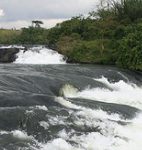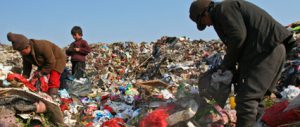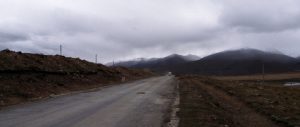Ten years ago, the small mountain kingdom of Lesotho in southern Africa became a water-exporting country — even though it does not have nearly enough water for its own needs, suffers from recurrent droughts and a majority of its population has no access to clean water. Indeed, the United Nations in 2007 called for Lesotho to be given emergency relief aid, including water for people and livestock, to address a growing humanitarian crisis.
The country became a water exporter when the Katse dam — Africa’s highest dam and the first in the massive Lesotho Highlands water project — began sending water through miles of mountain tunnels to South Africa’s industrial heartland. The theory behind this World Bank-sponsored project was that a country with a lot of water can earn money for poverty-fighting programmes by exporting to a water-strapped neighbour. While the bank’s financial support was critical in getting the project off the ground, other institutions — including the British government’s Export Credits Guarantee Department (ECGD) — participated in raising the US$3.5 billion for the first phase of this massive project.
However, the promised development benefits for Lesotho have proved elusive. In fact, the country has suffered as its fragile mountain environment has been degraded and native fish and plant species have been pushed towards extinction. At least 27,000 people in the highlands have lost their homes, fields and other vital resources as a result of the project. A further 150,000 people downstream have had their drinking water, farming and fishing affected by reduced river flows.
Income from water exports was to be paid into a development fund that would "share the wealth", but the fund found itself caught in a crippling mix of politics and patronage, and was closed in 2003.
Despite a clause in contracts that people should not be made poorer as a result of the project, compensation programmes have been largely ineffective and lost livelihoods have not been restored. An impoverished population, traumatised by pending resettlement, also was highly vulnerable to HIV–Aids brought in by thousands of migrant workers building the dams — resulting in a growing population of orphans fending for themselves.
"They promised that our lives would be improved, but instead our dignity has been destroyed," says a member of the local Survivors of Lesotho Dams (SOLD) group.
As with many large infrastructure projects, corruption was widespread and several prominent companies were found to have bribed project officials to secure lucrative contracts. Unlike most cases of corruption, however, this one took a David and Goliath turn when the Lesotho courts convicted several international consulting and engineering companies for their part in the bribery. But the western backers of the project appear complacent about their own nationals implicated in corruption. [In November 2008, the United Kingdom’s Serious Fraud Office dropped an investigation into a British company over alleged corruption in Lesotho.]
Africa‘s history of large dams is filled with tragedy. Many have caused indebtedness, political inequities and widespread environmental degradation, and have sapped resources from more appropriate, smaller-scale development projects. Now more mega-dams are planned for countries around the world, with support from western donors and, increasingly, from Chinese, Brazilian and Indian investors.
The World Bank’s private sector arm, the International Finance Corporation (IFC), and the European Union’s European Investment Bank (EIB) are supporting the controversial US$800 million Bujagali dam, now being built at the site of a beautiful cascade on the Nile river in Uganda. As well as impacts on endangered fisheries and local communities, critics question the dam’s ability to provide affordable energy. "The high cost of the project will further limit funds for rural electrification," says Frank Muramuzi, of the National Association of Professional Environmentalists (NAPE), in Uganda’s capital, Kampala. "Uganda already has the most expensive power in the region, and tariffs have more than doubled recently, pushing more people out of the already limited market for electricity."
Studies indicate that global warming could reduce outflows from Lake Victoria, affecting hydropower from Bujagali and making the project even less viable.
In Mozambique, China and Brazil may cooperate to build a new dam on the Zambezi river, undermining a plan to restore the Zambezi delta and its rich fisheries, wildlife areas and farmlands by allowing more natural flows out of existing dams.
But the jewel in the crown that companies from around the globe are eagerly eyeing is the Grand Inga, the world’s biggest dam project, proposed for the Democratic Republic of Congo (DRC). At an estimated cost of US$80 billion, Grand Inga will be a magnet for corruption in one of Africa’s least stable regions. Its price tag does not include distribution networks needed to supply energy to the long-suffering people of that country. Mining, timber and other industries will be the main beneficiaries, while poor farmers and fishers who depend on the river’s flow of the water and nutrient-rich sediments will be the losers.
Affordable energy and clean water are critical if poverty is to be reduced, but there is no indication that mega-dams fill these central needs. Sadly, the current situation means that the poor are largely sidelined by the competition for a share in the global dam-building business.
Korinna Horta is an economist with the US non-profit organisation Environmental Defense. Lori Pottinger is director of the Africa programme with the International Rivers campaign group.
Homepage photo by henribergieus
https://environment.guardian.co.uk/




